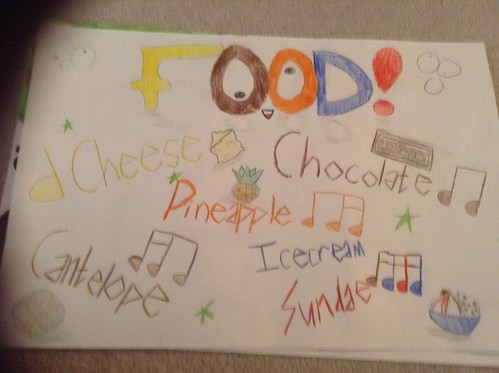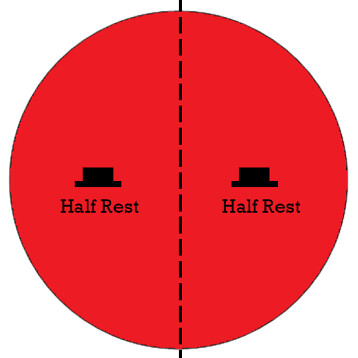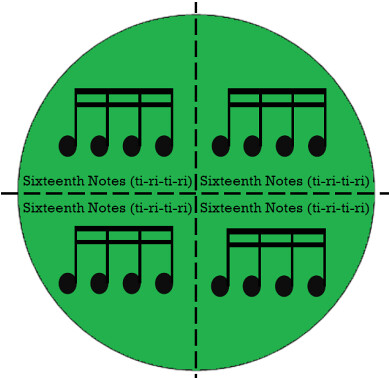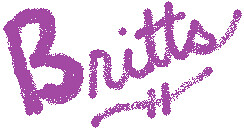This week is week 2 for me. (We normally start a little later here in Wisconsin.)
Here is a quick glimpse into my week:
Kindergarten
I'm still going through the music rules step by step in my classroom. I only see Kindergarten once a week at one of my schools and since I'm introducing one Rule Song a week, they won't be done with all the rules until October. It is a little sad to me that I don't get to see them all more often, but it is what it is! At my other school we are on to rule #3 and will be finishing rule #4 at the end of this week. (That is one stress of working in two different districts, it is sometimes very difficult to keep everyone on track or to remember where I am with different classes)
For my rules this year I'm using Lindsay Jervis's Rule Songs, as they came with her Owl Themed Rules. You can find them by clicking on the picture below:

Songs we are singing in Kindergarten this week:
- No More Pie
- Chop, Chop Chippity Chop
- She'll Be Comin' Round the Mountain
- My Aunt Came Back
- Engine, Engine Number Nine
- Bee, Bee Bumblebee
- William He Had Seven Sons
- Frog in the Meadow
- Pitter Patter
1st Grade
Now that we are in the second week of school we are reviewing some of the concepts we learned in Kindergarten to prepare for learning ta & ti-ti. I'm not yet labeling ta & ti-ti, but we are singing various songs that we will eventually learn ta & ti-ti with.
Songs we are singing in 1st Grade this week:
2nd Grade
In 2nd grade we are going to be reviewing ta & ti-ti and are currently preparing for ta-a. In order to do this I have picked out some songs that use ta, ti-ti, and ta-a. We will learn these songs and become comfortable singing them through a couple days of practice. When students are able to sing the songs on their own we will then begin to look at finding ta & ti-ti in the songs. Then later, we will work on figuring out our new note. My goal is to have introduced ta-a (and possibly ta-a-a-a) by November when we start working on our Christmas concert.
Since we are singing 2 French songs, I created a story to go along with introducing these songs by saying we were all going on a trip to France. Students had to find where France is on a map and we discussed how we would get there (plane, car, boat, etc.) This was a lot of fun. It is always great to incorporate a little bit of Social Studies into music class, as well as some global awareness.
Songs we are singing in 2nd Grade this week:
- Au Claire de la Lune
- Frere Jacques
- Who's That Tapping at my Window
- Here Comes a Bluebird
- The Water is Wide
- My Father's House
3rd Grade
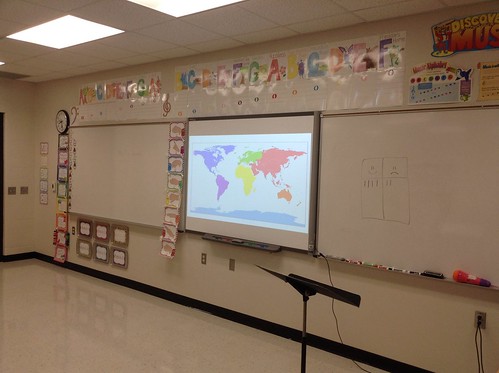
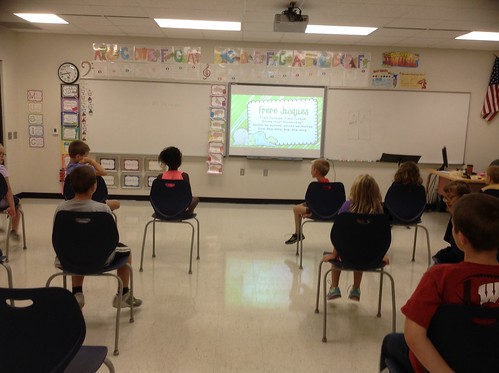
As you can see my 3rd graders are doing similar things in music as my 2nd graders. We also looked at the map and found France. However, the reason I'm doing these songs in 3rd grade is to reinforce ta-a and ta-a-a-a. Some of my 3rd graders got to the assessment portion of half note, whole note, half rest, and whole rest, but another section didn't get to it. This will help review this concept for the classes that did assess it and prepare my other 3rd graders for assessing it.
Songs we are singing in 3rd Grade this week:
- Au Claire de la Lune
- All Through the Night
- Frere Jacques
- Who's That Tapping at my Window
- Here Comes a Bluebird
- The Water is Wide
- My Father's House
4th Grade & 5th Grade
My 4th & 5th graders ended the year after learning about ti ta ti and just beginning to look for low so and low la. I decided we would start with a couple ti ta ti songs that actually use low so and low la for added practice, since we weren't quite ready for the assessment at the end of 3rd grade. Shake the Papaya Down and Alabama Gal were two songs they learned last year that we are now reviewing ti ta ti with. When we seem comfortable with singing these songs and with the rhythm I'll start to work on the solfege for these concepts.
Along with singing my students began to learn the dance for Alabama Gal as a fun incentive for good behavior in music class. Both my 4th and 5th graders absolutely loved doing the dance yesterday, so it will be a great way to make sure we stay on task.
*NOTE: My 4th and 5th graders are around the same level because of when I started at these two schools. These classes aren't quite at the level where I would like them to be, but we are definitely getting closer every year.
Songs we are singing in 4th Grade & 5th Grade this week:
- Shake the Papaya Down
- Alabama Gal
- Scotland's Burning
- Canoe Song



